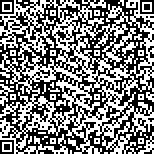孙丹乔,王强,柏广涛,薛俊强,邓钰,王欣欣.神经康复机械手强化训练对脑卒中偏瘫患者上肢运动功能恢复的影响[J].中华物理医学与康复杂志,2018,40(2):96-99
扫码阅读全文

|
| 神经康复机械手强化训练对脑卒中偏瘫患者上肢运动功能恢复的影响 |
| Effects of hand robot-assisted training on hemiplegic stroke patients′ recovery of upper-limb function: A randomized and controlled trial |
| |
| DOI: |
| 中文关键词: 脑卒中 偏瘫 上肢功能恢复 机器人技术 |
| 英文关键词: Stroke Hemiplegia Upper extremity function Robot technology |
| 基金项目:山东省自然科学基金(ZR2014JL057) |
|
| 摘要点击次数: 6546 |
| 全文下载次数: 8026 |
| 中文摘要: |
| 目的 探讨神经康复机械手强化训练对脑卒中偏瘫患者上肢运动功能恢复的影响。 方法 选取脑卒中偏瘫患者32例,按随机数字表法分为常规康复训练组(10例)、神经机械手治疗组(10例)和强化神经机械手治疗组(12例),患者均接受神经科常规药物治疗,常规康复训练组在此基础上接受常规性康复训练,每日40min,每周5d,神经机械手治疗组在常规康复训练组基础上增加机械手康复训练,每日20min,每周5d,强化神经机械手治疗组在常规康复训练组基础上增加机械手康复训练,每日40min,每周5d,所有患者均治疗4周。治疗前及治疗4周后(治疗后),对3组患的Fugl-Meyer上肢运动功能(FMA-UE)、改良Barthel指数(MBI)、上肢动作研究量表(ARAT)结果进行评估比较。 结果 治疗前,3组患者FMA-UE、MBI、ARAT比较,差异无统计学意义(P>0.05)。与组内治疗前比较,3组患者FMA-UE、MBI、ARAT均有所改善(P<0.05)。与常规康复训练组比较,神经机械手治疗组治疗后FMA-UE[(47.0±2.6)分]、ARAT[(47.0±3.5)分]较高(P<0.05),强化神经机械手治疗组FMA-UE、MBI、ARAT均较高(P<0.05)。与神经机械手治疗组比较,强化神经机械手治疗组FMA-UE[(51.0±1.8)分]、MBI[(78.0±4.5)分]、ARAT[(51.0±2.3)分]均较高(P<0.05)。 结论 神经康复机械手强化训练能显著改善脑卒中偏瘫患者上肢运动功能和日常生活能力。 |
| 英文摘要: |
| Objective To explore the effect of intensive upper limb therapy assisted by a hand robot on motor function after stroke and performance in the activities of daily living. Methods Thirty-two hemiplegic stroke survivors were randomly divided into a conventional rehabilitation group (group A, n=10), a robot-assisted therapy group (group B, n=10), and a robot-assisted intensive therapy group (group C, n=12). The three groups all received routine drug therapy and daily 40 min sessions of conventional rehabilitation training 5 days a week for 4 weeks. Those in groups B and C were additionally provided with 20 min of robot-assisted therapy or 40 min of more intensive robot-assisted intensive therapy respectively. Before and after the intervention, the 3 groups were assessed using the Fugl-Meyer assessment for the upper extremities (FMA-UE), the action research arm test (ARAT) and the modified Barthel Index (MBI). Results No significant differences were observed among the 3 groups in any of the measurements before the treatment. In each group the average FMA-UE, MBI and ARAT scores had increased significantly after four weeks of treatment. The improvements in the average FMA-UE and ARAT scores were more significant in group B than in group A, while the FMA, MBI and ARAT scores suggested a significantly greater improvement in group C than in group B. Conclusion Robot assistance can help to improve upper extremity motor function after a stroke. It also has an obvious effect on improving performance in the activities of daily living. |
|
查看全文
查看/发表评论 下载PDF阅读器 |
| 关闭 |